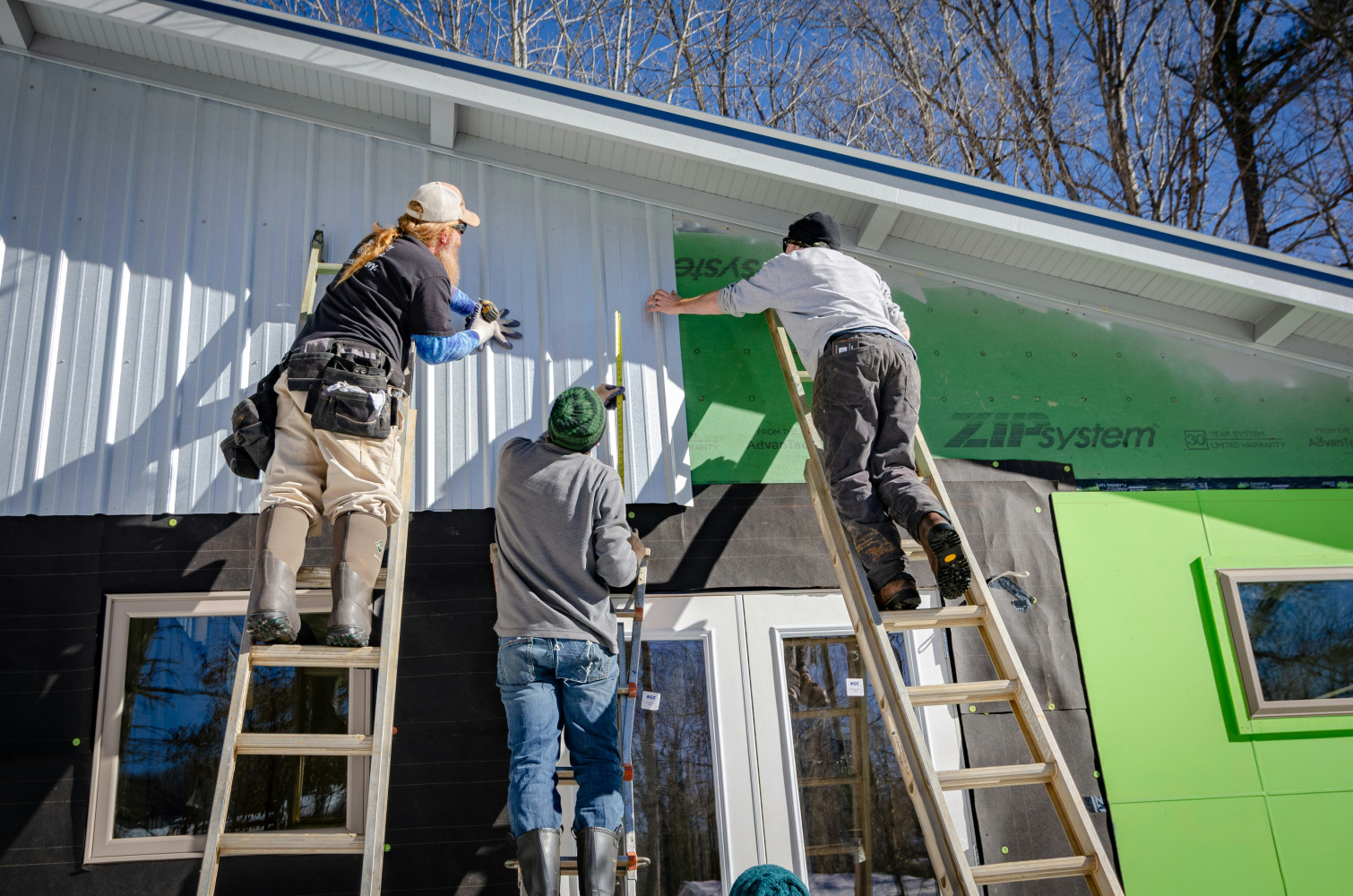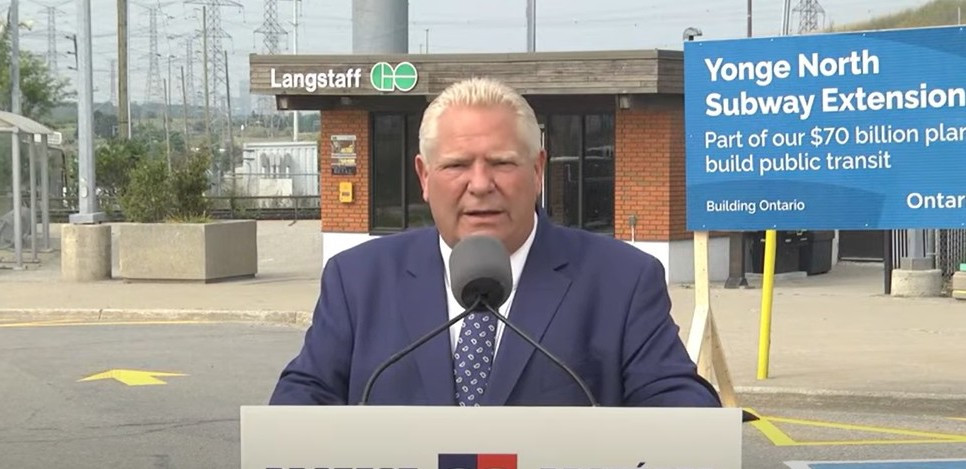
'Everything is more expensive': Brampton builders grappling with soaring material costs, U.S. tariffs
The majority of products we buy and sell are covered under the Canada-United States-Mexico Agreement, the free trade pact between the three countries, which softens the blow of tariffs on goods that fall outside the deal.
The construction sector has not been so lucky, hit hard at a time when projects across Ontario are being changed on the fly or, in some cases, placed on the backburner.
Local developers across Peel are experiencing the financial strain.
"Basically, I'll just tell you what, everything has gone up. Everything is more expensive now," said Sky Singh, who runs Alfa Developers Inc.
"Yes, we have to switch suppliers to the cheaper ones. We switch suppliers in those cases."
Singh says that due to the price hike of certain building materials like “lumber, steel, windows, and some finishings for plumbing,” it creates a barrier for them to deliver affordable housing all over the Greater Toronto Area (GTA).
"Yeah, it is. In Brampton, sure it does. Because everything goes up," he explained.
"We can't really increase our costs that much regardless because of the market; no one's going to buy homes because they're too expensive anyway, or if they're not able to qualify for a mortgage."
Singh continued, "You don't have a choice, because the market is terrible. Those interest rates are so high, from what we've heard, that people aren't able to get mortgages for a decent price."
The ongoing economic tensions have led to significant job losses in the construction sector, as there are few jobs available because the number of houses being built has declined. According to data from Statistics Canada, Ontario lost nearly 1,300 construction jobs last year.
"It's been like that for years; nothing new in that, but people have lost jobs in a lot of calls for some trade jobs. We have less jobs available because we are not building as many homes," Singh said.
This economic turbulence came after United States President Donald Trump signed an executive order on July 31, which took effect on August 1, to increase the tariffs on all non-CUSMA compliant goods from a previously announced 25 percent to 35 percent, citing Canada’s failure to take sufficient measures to control the flow of illegal drugs entering U.S from north, and to dismantle the organizations involved in human and drug trafficking. It’s a misleading claim the U.S. president has repeated despite evidence to the contrary. Data from the U.S. Drug Enforcement Agency show Canada is responsible for less than 1 percent of the street fentanyl in the United States.
Trump’s executive order also mentioned that the new wave of levies is a direct result of Canada’s pushback through counter tariffs on U.S. products. Those counter tariffs were put in place by Canada following Trump’s move in February to impose 25 percent tariffs on the products not covered under the CUSMA. Those tariffs took effect in March.
On August 22, Prime Minister Mark Carney announced that Canada, to align with the United States, will be removing tariffs on U.S. goods covered on CUSMA effective September 1.
“Canada will retain our tariffs on steel, aluminum and autos as we work intensively with the U.S. to resolve the issues there,” Carney’s statement explains.
For the construction industry, 50 percent levies remain on steel, aluminum and some copper products like pipes and wires, which are used at every level of construction, causing sweeping impacts for home builders.
The increased levies are affecting the supply chains of small and medium-sized companies that, for instance, have been purchasing materials from companies whose manufacturing plant is outside of Canada. It can be difficult for these businesses to immediately find an alternative supplier.
In response to these tariffs, Carney previously expressed disappointment over the U.S. trade decision and reaffirmed that his cabinet remains committed to CUSMA and to taking aggressive actions to reduce fentanyl imports, migrant trafficking, and doubling down on these criminal gangs.
"The United States has justified its most recent trade action on the basis of the cross-border flow of fentanyl, despite the fact that Canada accounts for only 1% of U.S. fentanyl imports and has been working intensively to further reduce these volumes. Canada’s government is making historic investments in border security to arrest drug traffickers, take down transnational gangs, and end migrant smuggling. These include thousands of new law enforcement and border security officers, aerial surveillance, intelligence and security operations, and the strongest border legislation in our history."
Carney continued, “We will continue working with the United States to stop the scourge of fentanyl and save lives in both our countries."
Nearly a week after Trump increased tariffs, Carney held a virtual meeting with his cabinet members and premiers to discuss how to deal with the current economic crisis. Ontario Premier Doug Ford, while being supportive of Carney’s policies, urged Ottawa to take a tougher approach by imposing an equivalent number of tariffs.
"I think the Prime Minister is doing everything in his power to get a fair-trade deal with the U.S., and I'm 100 percent supportive of the Prime Minister and the federal government," Ford stated at an August 6 press conference in Thornhill, Ontario.
"The U.S. is our largest customer. We respect them, but it has to go both ways. You can't have tariffs on one side and not the other. I still stand by what I say, dollar for dollar, tariff for tariff. They understand strength, not weakness, and we should never, ever roll over and be weak."

Ontario Premier Doug Ford spoke to the media at a press conference in Thornhill, Ontario on August 6.
(Government of Ontario)
At a time when the country is already reeling from a historic housing crisis, with unaffordability at an all-time high and supply failing to keep up with population growth, especially in Ontario, tariffs are adding another layer of concern not only for developers, but for anyone looking to buy a home.
According to a 2024 report from Statistics Canada, 45 percent of the country’s population is worried about the ability to afford housing due to increased housing prices and rents skyrocketing. About one-third (35 percent) of Canadian households reported difficulty meeting their financial needs (food, transportation and housing) in the past 12 months prior to publishing the report. The research also suggested that young adults aged 20 to 35 experienced housing affordability challenges during the past year.
While the Carney administration is committed to building 500,000 homes across Canada annually to combat the housing crisis, the financial strain related to these tariffs might create a hurdle for construction companies to meet that target.
Email: [email protected]
At a time when vital public information is needed by everyone, The Pointer has taken down our paywall on all stories to ensure every resident of Brampton, Mississauga and Niagara has access to the facts. For those who are able, we encourage you to consider a subscription. This will help us report on important public interest issues the community needs to know about now more than ever. You can register for a 30-day free trial HERE. Thereafter, The Pointer will charge $10 a month and you can cancel any time right on the website. Thank you
Submit a correction about this story


